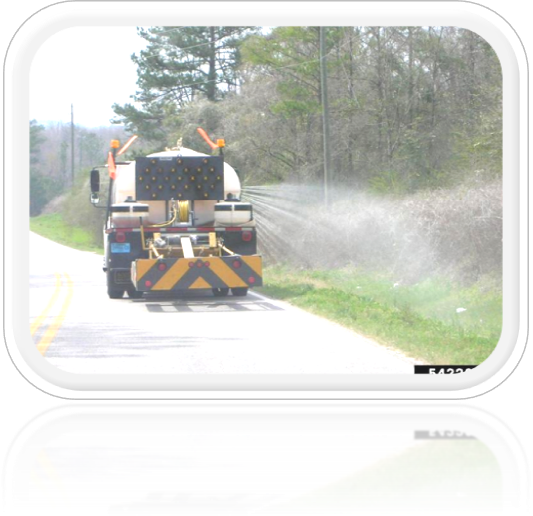From the Conservation/ Legal Director Summer 2021
Angela Jensen
Conservation is a broad topic. Yet I often find that I center my newsletter articles on topics related to forestry and climate change. So, for this newsletter I am going to address a different issue entirely- the ubiquitous use of herbicides. More specifically, I want to reach out to our readers with something of a call to action concerning roadside application of herbicides in our communities. I want to start a conversation and I invite your thoughts and collaboration on possible solutions to this issue.


We are all aware of the broad range and uses of herbicides in our daily lives. Forestry managers apply herbicides to suppress the growth of unwanted vegetation in hopes of freeing space and resources for economically valuable tree species. Landscapers use herbicides to ensure aesthetically pleasing yards and entryways. And public right of ways (ROWs) are kept free from the encroachment of wild vegetation by use of these same herbicides.
But what are the consequences of using these herbicides so freely on ROWs? Are there alternatives?
The most commonly applied herbicides in roadside applications can have various detrimental effects. For example, glyphosates such as Roundup are toxic to birds and fish, can to leach through soils and reach water sources, have shown to detrimentally affect reproductive viability, can damage the liver and kidney, and are known carcinogens. Other herbicides like 2,4-D have these same effects but additionally cause birth defects, are toxic to bees and other pollinators, and are known neurotoxins. And while these herbicides are used freely to control roadside vegetation, water sources and wildlife are at risk of contamination.
Isn’t it time to revisit this management strategy? What can you do as a community member to reduce the use of these toxic chemicals in our shared environment?
For concerned private landowners, the solution is relatively simple. Oregon is one of a few states that offer “no spray agreements” between the ROW managing entity and landowners. Basically, this agreement requires the landowner to manage roadside vegetation adjacent to their property at their own expense. As part of the agreement, the managing entity promises to refrain from spraying between the property owner’s clearly marked signs.
Of course, not everyone is a property owner and much of the roadside property that is managed with herbicide applications belongs to counties and municipalities. In this case, a strategy to reduce the use of herbicides must be different. One option is to advocate for an Integrated Roadside Vegetation Management (IRVM) plan. An IRVM usually employs mechanical methods of vegetation management like mowing and burning, and integrates the planting of native vegetation to control invasive and noxious weeds. Furthermore, IRVM plans often restrict the use of herbicides to the least toxic necessary for the job and employ their use only when the risk of contamination to water and wildlife is at its minimum.
But IRVM plans are not universally used and certainly are not the cost-effective option many counties turn to first. And while advocating for the use of IRVM plans has its merits, it would likely take a fair bit of time to convince the managing entity to develop and implement such a plan.
This brings me to my final thoughts. As a concerned citizen, you have the right to know what is being sprayed on public roadsides and when these applications are set to occur. Along these same lines, the management plans under which the Oregon Department of Transportation (ODOT) operates concerning roadside vegetation management are open for public review. Furthermore, these management plans and the resulting application of herbicides must comply with the Clean Water Act and the Safe Drinking Water Act.
Thus, if you are concerned with the liberal and excessive use of herbicides in your community to manage roadside vegetation, ask ODOT to review the permit authorizing the application to ensure that it is in compliance with applicable statutes and regulations. Additionally, this will ensure that the applicator is in compliance with the permit itself. Finally, don’t hesitate to reach out to the Department of Environmental Quality (DEQ). The DEQ is tasked with updating, modifying, and improving ODOT’s statewide permits and management plans. Ask for the opportunity to contribute in the decision-making process.
Use your voice. It is powerful. Together, we will find solutions.

